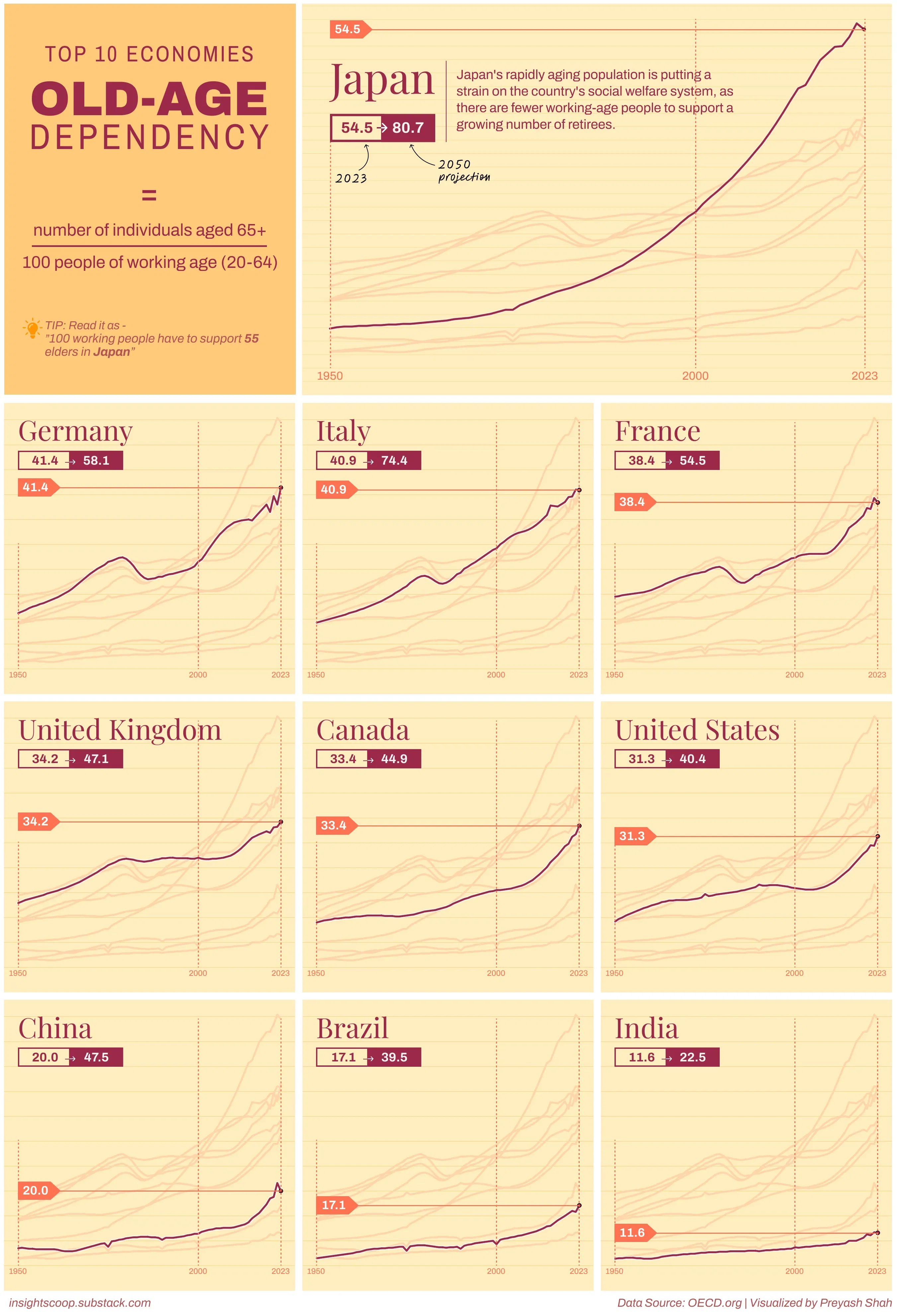Where Data Tells the Story
© Voronoi 2025. All rights reserved.

Subscribe to Insight Scoop to get amazing visualizations in your Inbox every Tuesday >> insightscoop.substack.com
----
As the world's population ages, a key demographic indicator has gained prominence: the old-age dependency ratio. This ratio measures the proportion of the population aged 65 and over relative to the working-age population (those aged 15 to 64).
It serves as a valuable tool for understanding the potential strain on social welfare systems, labor markets, and healthcare resources.
What Does the Old-Age Dependency Ratio Tell Us?
A higher old-age dependency ratio indicates a growing proportion of older adults reliant on the support of a smaller working-age population.
This demographic shift can have significant implications for societies, particularly in terms of:
Factors Affecting the Old-Age Dependency Ratio
The old-age dependency ratio is influenced by three key factors:
Some of the ways to address the challenges of an aging population is and reduce old-age dependency is by enabling —
The old-age dependency ratio is a critical indicator of demographic change and its potential impact on societies. The countries that are facing the challenge in near term have to set a precedent on how to navigate this issue. It would be interesting to keep a close eye on how Japan reacts to this challenge as it is first in line!